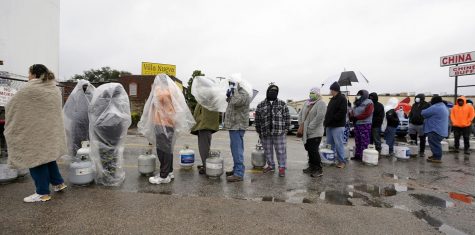The story behind the Texas power crisis: A warning shot for the U.S. (OPINION)
March 18, 2021
In a lot of ways, snow is great and one of the best parts of winter. Winter sports like skiing and snowboarding can be a blast, building snowmen and having snowball fights are timeless activities, and of course, it’s always nice to get a snow day. But what happens when you lose your electricity and your heating? What happens when grocery stores and businesses close down? When there’s no clean water available?
That was the nightmare that millions of Texans suffered after being hammered by two severe winter storms, one starting Feb. 10 and the other starting Feb. 13. The ensuing freezing temperatures caused a state-record demand of 69,150 megawatts of electricity. Texas’s power grid was ill-prepared for the sudden demand and initiated rolling black-outs in specific areas to try and prevent equipment failure and ultimately an even costlier statewide blackout.
This measure still proved costly, as millions of Texans were without power, many of them for several days. Because of this, many grocery stores across the state were forced to shut down. The ones that remained open became extremely busy and ran out of basic items like bread, milk and eggs.
On top of the food shortage, water became quite scarce, as water pipes froze and burst all over the state. Some areas had no operational water systems at all. The government has alleviated some of these concerns through sending power generators and fresh water to some of the most harshly affected areas.
In less than a week, the state of Texas was without electricity, heating, food and water. This disaster comes just a few years after the devastating Hurricane Harvey landed in Texas in August 2017. Mother Nature has certainly frowned upon Texas in the lately, but perhaps there’s a reason why.
For starters, it’s no secret that Texas officials have no one to blame but themselves. These same issues actually occurred as early as 2011 in a similar winter storm, leading to the North American Electric Reliability Corporation (NERC) recommending that Texas improve their systems to prevent blackouts in the future. State officials ignored the warning due to the costs, but this stinginess has come back to bite them in a big way. The crisis has cost the state of Texas nearly $200 billion and the lives of dozens in the Lone Star state.
Regardless of Texas’s costly oversight, severe weather in the world has become more devastating and more common over time. The cause? Climate change, according to many scientists.
The rising temperatures in the Arctic is believed to weaken the jet stream, which normally keeps cold air in the northern hemisphere. A weakened jet stream allows this cold air to emerge in southern places like Texas, which eventually can spawn these snow storms.
What this means for the United States is that regulated power systems are becoming a necessity. As these natural disasters become more common, the countermeasures need to become more consistent. Although costly, experts recommend for states to fortify power plants and create back-up power sources.
The bright side of this is that humanitarian efforts are slowly helping those who have been most affected by the storms. One effort championed by congresswoman Alexandria Ocasio-Cortez has raised over $5 million for Texas nonprofits. Ocasio-Cortez said the storms were “worsened by selfishness + denial of basic science [by Texas officials].”
As Texas recovers from another environmental crisis, a nationwide warning call has been fired. As the climate changes, the nation needs to as well.

Photo from David J. Phillips.



